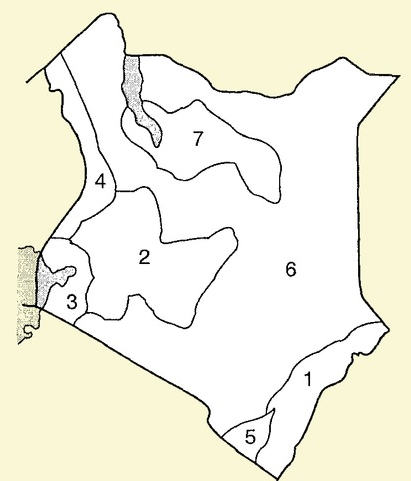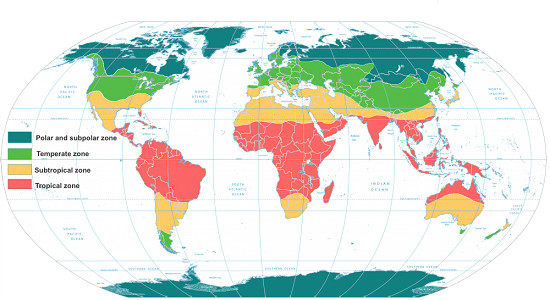
Climatic Regions in Kenya (Image: Courtesy)
KEY
1. Modified Equatorial Climate of the Coast
2. modified Tropical Climate of the Highlands
3. Modified Equatorial Climate of the Lake Basin
4. Modified Equatorial Climate of the North Western Margin
5. Tropical climate of Narok and Southern coastal Kwale areas
6. Tropical semi-desert climate of the central and northern areas
7. Desert climate of central northern areas.

